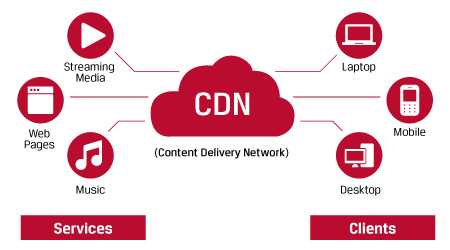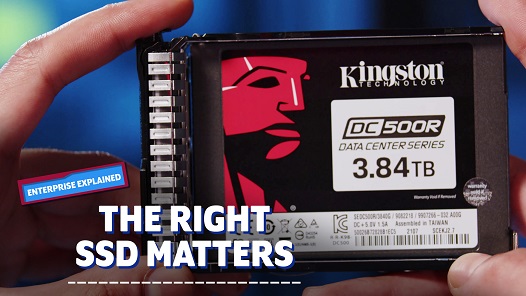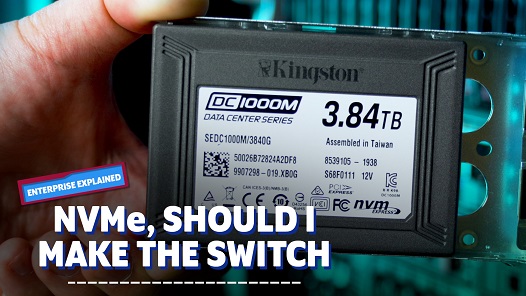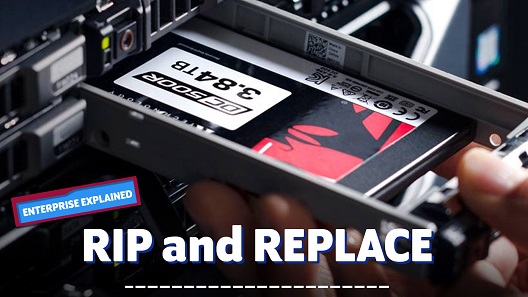Ask an Expert
Planning the right solution requires an understanding of your project and system requirements. Let Kingston's experts guide you.

The world of media and entertainment (M&E) has changed faster than many industries. In large part this is thanks to the streaming revolution. From production methods to encoding, rendering and delivery, the demand for newer and faster technologies has never been higher.
But when it comes to creating eye catching and engaging M&E experiences for the consumer, there are multiple factors facing content creators and video distributors as it relates to the technical architectures for production and distribution.
Whether producing the latest sitcoms, features or blockbuster films, production environments need to be captured at the highest quality possible in order to deliver crisp content to our screens. Netflix, for example, requires that all content is delivered in 4K for master files. Additionally, for workflows that are Netflix-approved, you must shoot above 4K resolution. Going from 4K to 8K means 4x the data for every frame, and with formats like HDR and dynamic color depth, they end up being even larger file sizes.
Like shooting on film where you are limited to however many frames per second your camera can feed through the shutter, RAW digital shooting can’t have frames encumbered by the speed at which hard drives can be written on. For example, a camera with a sensor of 8192 x 4608 (16:9 aspect ratio) generates about 136 gigapixels per minute shooting at 60fps. If each sample is 16 bits, that is 272GB/min of uncompressed data that needs to be stored, or 4.5GB/s.
But aside from shooting, scenes need to be transferred to editors and producers rapidly to review “dailies” and determine if anything needs to be reshot. The longer it takes to transfer data from a camera or connected storage device to another, the less efficient the production is. Hours can be wasted with crew and talent sitting around idle while data transfers. To avoid this, the footage needs to be quickly downloaded to editing bays, preview rigs, and given to other departments - almost in tandem.
This in turn requires high-capacity drives and lightning-fast throughput so there aren’t bottlenecks when transferring data from the camera to the editors. An even more efficient solution: shared-resource servers where multiple departments can collaboratively edit the footage.
For years production houses have relied on cheap HDDs (hard disk drives), but with the amount of data created by modern cameras and the requirements from distribution workflows, houses are now moving to U.2 and M.2 NVMe drives to take advantage of the fast transfer speeds and computing improvements.

If one person in California wanted to watch a video that was stored on a data center in Virginia, they would have to download it across a long-haul network. But if 100 or even 1000 people around the world wanted to watch the same video, you would end up with network congestion and slow viewer experiences.
To combat latency and network bottlenecks, more streaming services use Content Delivery Networks (CDN) to distribute their content worldwide. The concept is based on old principles of enabling websites to load faster with static content like photos, text and ads; but in recent years has evolved to include streaming video, audio and dynamic multimedia content.
CDNs have a unique challenge in not only delivering the content but doing it in a way that doesn’t constrict bandwidth. To do this, most CDNs leverage a principle of Adaptive Bitrate (ABR) streaming, which delivers multiple resolutions and adjusts playback based on the current network conditions of the consumer’s device. If you want to watch a 4K video but there’s network congestion, the player might temporarily request a lower-resolution stream, so that you don’t have to wait for pauses while the content loads, or “buffers”.
ABR is excellent for playback but does put a strain on CDN storage because each rendition quadruples the amount of data for the next version (480p to 720p), and even larger with dynamic color ranges like HDR. To account for this, many CDNs built their data centers on high capacity NVMe SSDs that also have extremely low latency for read access and use sophisticated caching schemas to deliver all ABR renditions at the same time.
To further combat latency for playback and buffering, CDNs are investing in more edge computing, to get the content onto servers that are physically closer to the consumer. These require content to be duplicated around the world, with virtual RAID and backup storage to ensure redundancy. Most of these edge computing nodes will also follow the same caching strategies for ABR delivery but may also keep the applications themselves operating in-memory for rapid file access and faster time-to-first-frame. This requires maximizing both the RAM and configuring NVMe caches across the data center.
Streaming media and entertainment services have exploded in popularity, so it's no surprise that the industry is embracing the newest technologies to meet the demand of consumers. From high-capacity NVMe SSDs to large RAM allocations, M&E is driving much of the development for low latency technologies that can capture, create, and deliver the highest quality videos and apps around the world.
#KingstonIsWithYou

Planning the right solution requires an understanding of your project and system requirements. Let Kingston's experts guide you.
When you start with Kingston, choosing memory is easy.
With over 35 years of expertise, Kingston has the knowledge and resources you need to choose memory with confidence.
Simply enter the make and model number or system part number of the computer system or digital device to find the Kingston products you need.
Search by either the Kingston part number, distributor part number or manufacturer equivalent part number.

Choosing the right SSD is important since not all SSDs are alike. When it comes to data centers, choosing an SSD with the right performance consistency with low latencies that’s specifically built for enterprise and data center workloads is key for consistent and reliable performance.

With the rise of data, need of edge computing and edge networks data center upgrades with NVMe SSDs enable more possibilities than before.

SSDs are all alike, right? You plug it in and instantly have all of that Flash Memory available for your workload? Right? If you answered yes, then you’ve probably fallen to one of the 4 biggest mistakes you could make when selecting your SSD.

Some enterprises still make use of client SSDs to handle high-intensity server tasks, then rip & replace them when they fail to maintain the required standard of performance. Learn why that’s a false economy and how enterprise-level drives can increase organizational efficiency.